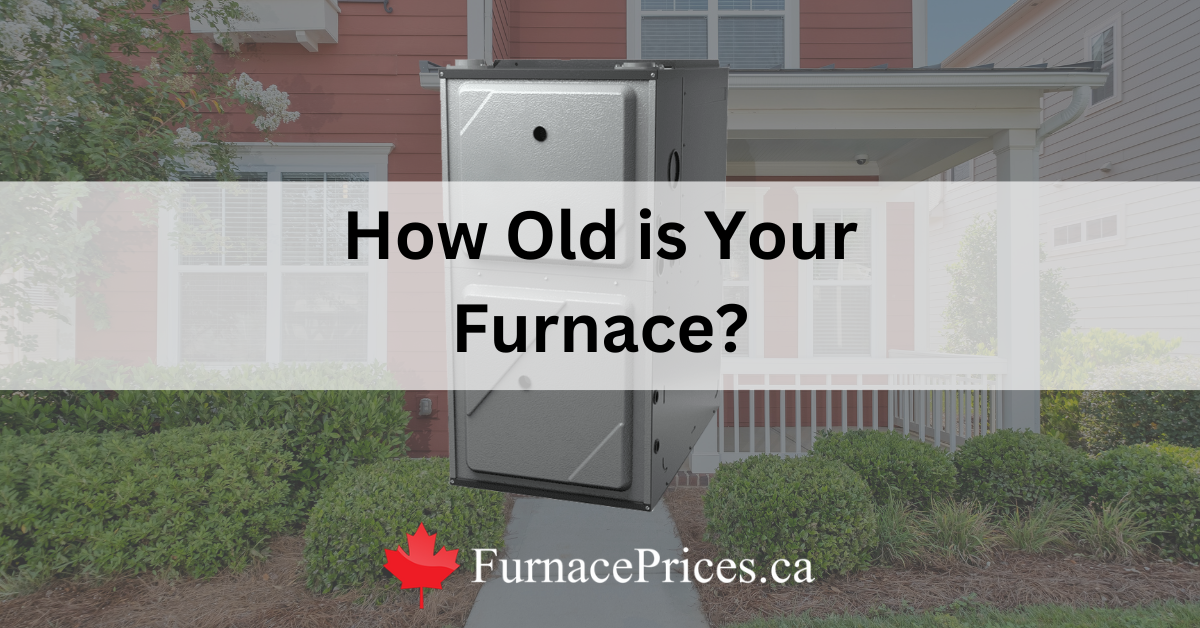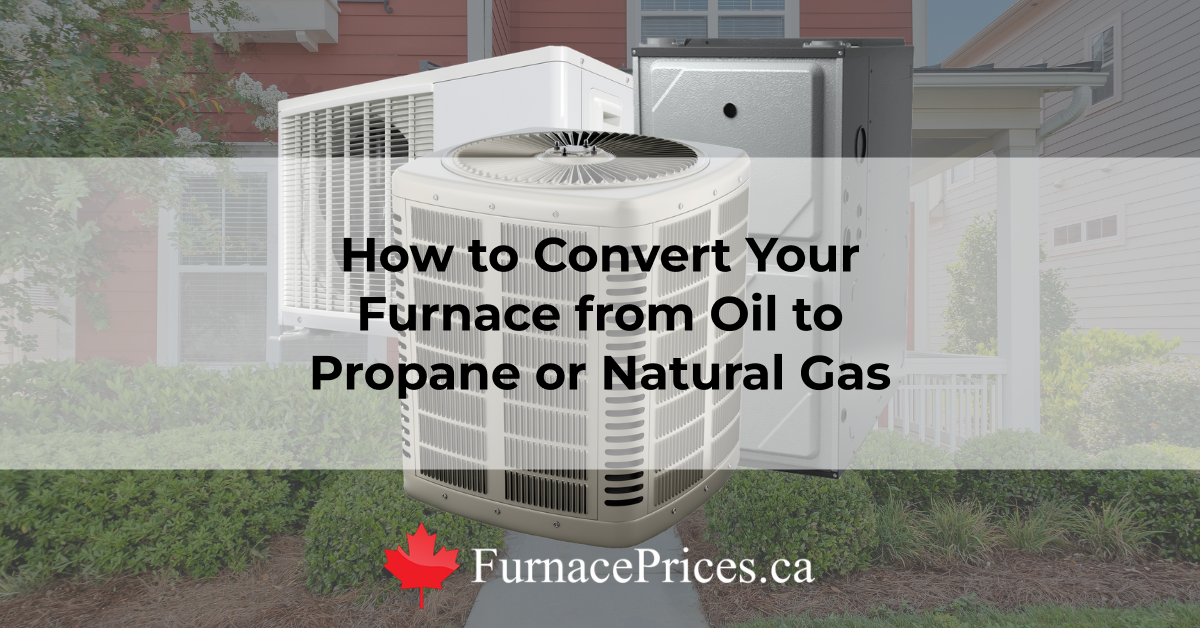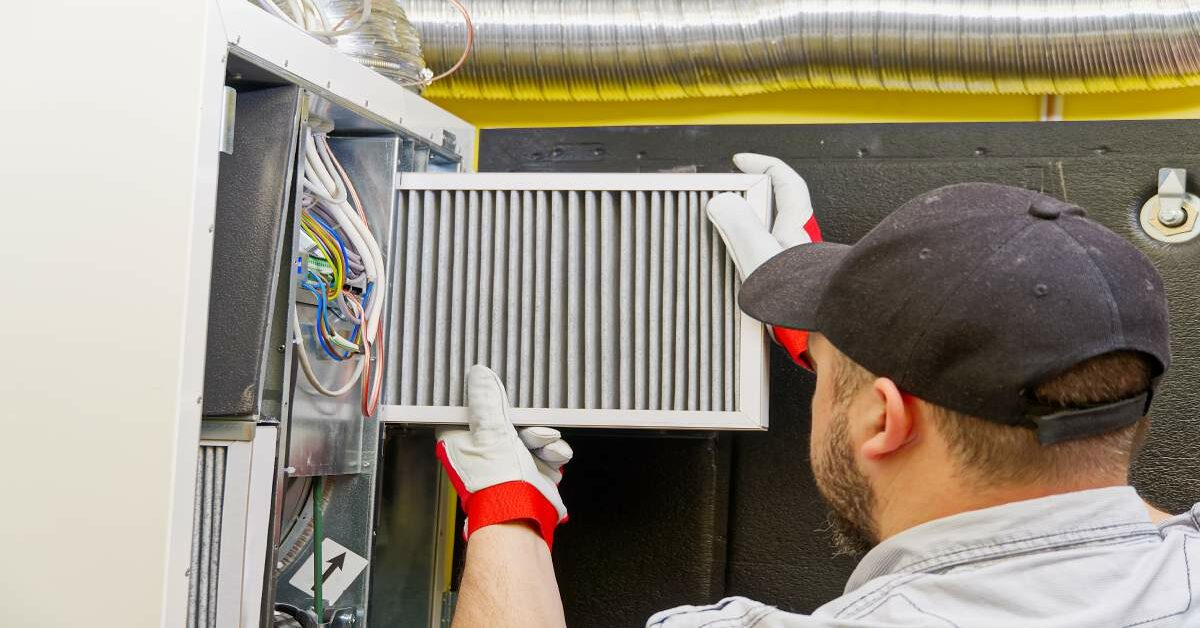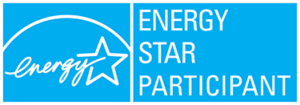The Price of Propane Furnaces in Canada

Try our furnace cost calculator for a rough estimate.
Converting from Oil or Electric Can Increase Costs
Propane Costs in Canada Based on 2025 Fuel Prices
Factors that Can Impact Propane Costs
Comparing the Energy Efficiency of Propane Furnace Models
Features and Technologies that Can Impact Cost, Efficiency, and Convenience

Get Quotes
How soon are you looking to buy?*



Popular Propane Furnace Brands in Canada
If you’re considering a propane furnace, you can browse our best furnace brands and compare furnace models.
Comparing Natural Gas and Propane Furnaces
Similarities Between Natural Gas and Propane Heating Systems
Here are some of the ways that gas and propane furnaces are alike:
Differences Between Natural Gas and Propane Heating Systems
Propane Furnace Pros and Cons
There are a number of reasons to consider buying a propane furnace, and some important considerations.
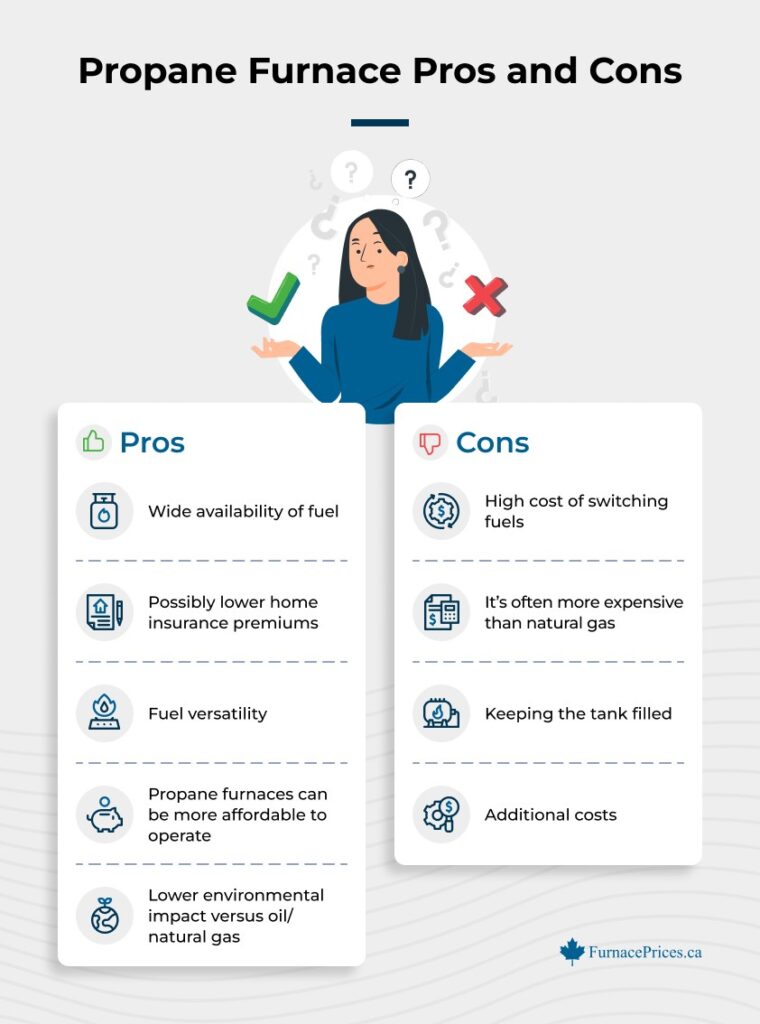
Pro: Propane Is Widely Available
Get Quotes
How soon are you looking to buy?*



5 Reasons You Should Switch to a Propane Furnace
There are many reasons to consider switching to a propane furnace, especially if you’re currently heating with oil, or wood.
- 1. You’re paying too much to heat your home
- 2. Your home insurance premiums are higher because of your furnace
- 3. You could make your home more appealing to potential buyers by switching
- 4. Your furnace isn’t as efficient as a new propane one could be
- 5. You could get a rebate for upgrading your furnace
Why Propane Furnaces Are Popular for Recreational Properties

Propane Furnace Lifespans, Maintenance, and Warranties
Life Expectancy
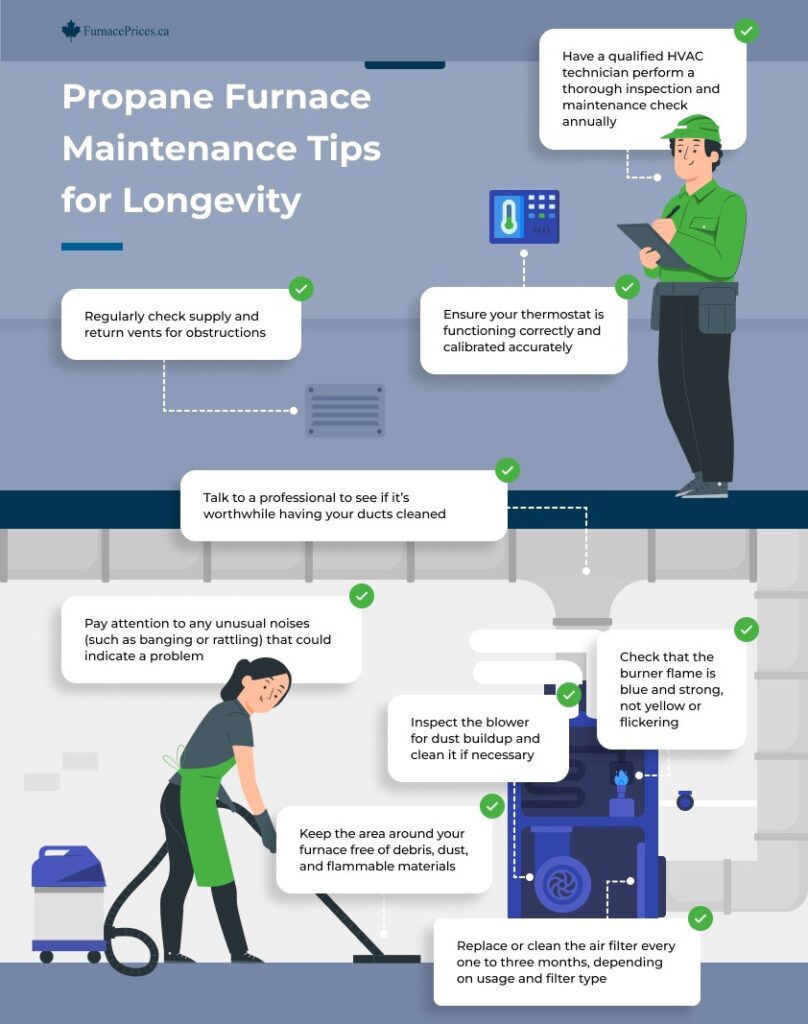
Propane Furnace Maintenance Tips for Longevity
Common Warranty Terms
Understanding Propane Furnace Sizing and Capacity
Environmental Impact: Propane Furnaces Vs. Other Heating Options
Safety Features to Look for in Propane Furnaces
Regional Considerations: Propane Availability and Regulations
The Final Word on Propane Furnaces
FAQ
Are propane furnaces an efficient home heating method?
Yes. There are many high-efficiency propane furnaces on the market that use as much as 98 percent of the fuel they consume, meaning there’s little waste. Moreover, propane is a more efficient fuel than natural gas, and gives you more heat output per cubic foot.
Isn’t propane heat expensive?
For most places in Canada, propane heat is cheaper than electric. Propane is also cheaper than oil, and the furnaces are more efficient. Even when compared to natural gas, the price of propane can be comparable when you factor in the fuel’s increased efficiency.
What size propane tank do I need?
A 500-gallon tank is the most common size when you’re heating your home with propane. There are smaller and larger tanks, but the smaller ones don’t hold enough fuel, and the larger ones are generally for commercial applications.
Get Quotes
How soon are you looking to buy?*






